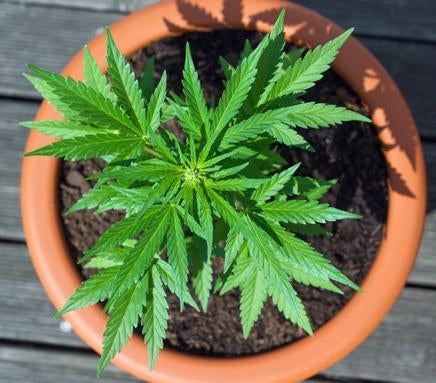Cannabis, also known as marijuana, has been in use as a medicinal plant for centuries. With the recent advances in the understanding of the therapeutic properties of cannabis, more and more people are turning to cannabis as a personal medicine. However, it is a challenge for individuals to access consistent and reliable options, as the quality and availability of cannabis products can vary widely. One of the solutions to this problem is the cultivation of cannabis for personal use. In this blog, we will explore the benefits of growing your own cannabis, the essential steps involved in the cultivation process, and the factors that need to be considered for the successful production of personal medicine.
The benefits of growing your own cannabis
Quality control: Growing your own cannabis allows you to control the growing conditions, ensure organic methods are used and avoid harmful pesticides or chemicals. It allows you to produce a quality, safe and potent medicinal product.
Strain selection: Commercial cannabis products often have a limited choice of strains available. By growing your own plants, you will be able to choose from a wide variety of cannabis strains that will meet your specific medical needs. Different strains have different cannabinoid and terpene profiles, which can provide targeted relief for a variety of medical conditions.
Cost-effectiveness: Especially for those who require regular and consistent doses, buying cannabis products from dispensaries can be expensive. By growing your own cannabis, you can significantly reduce costs in the long run, as the initial investment in equipment and seeds is often outweighed by the savings in the purchase of finished products.
Self-sufficiency: Growing your own cannabis plants will provide you with a sense of self-sufficiency, as you will no longer be dependent on outside sources to meet your medical needs. This autonomy allows for a consistent supply, even if the supply chain gets disrupted or regulatory changes.
Steps to growing cannabis for personal use
Research and planning: It is important to understand the plant’s growth requirements, including lighting, temperature, humidity and nutritional needs, before starting to grow cannabis. Familiarise yourself with local laws and regulations regarding home cultivation to ensure that they are complied with.
Set up: You need to create a suitable growing environment for your cannabis plants. This can be done indoors using a grow tent or special room, or outdoors in a suitable climate. Ensure that there is proper ventilation, lighting and temperature control for optimal plant growth.
Germination: Start by germinating your cannabis seeds using your preferred method of germination, such as the paper towel technique or the water glass technique. Once the seeds have germinated, transfer them to a growing medium, such as soil or hydroponics, and provide adequate lighting to encourage healthy growth.
Vegetative stage: During this stage, the focus should be on providing the plants with sufficient light, nutrients and water. To encourage vigorous vegetative growth, maintain a consistent light cycle of 18-24 hours per day. Prune and train the plants to ensure that a uniform canopy is maintained.
Flowering stage: To induce flowering, the light cycle should be adjusted to 12 hours of light followed by 12 hours of uninterrupted darkness. During this stage, the plants should be monitored for any signs of lack of nutrients, pests or diseases. Maintain adequate humidity to prevent mould.
Harvest and drying: Harvest your cannabis plants when the trichomes (tiny resinous glands) have reached the desired level of maturity. Trim the plants, remove the large fan leaves and hang them upside down in a dark, well-ventilated place to allow them to dry out slowly. The correct drying and curing process is crucial to the preservation of the potency and flavour of the final product.
Factors to consider for successful personalised medicine production
Genetics: Choose cannabis strains that are known for their medicinal properties and that are in line with your specific needs. Consider factors like CBD/THC ratios, terpene profiles, and effects associated with each strain.
Lighting: Invest in high quality grow lights, such as LEDs, that provide the spectrum and intensity of light required for optimal plant growth. Make sure the lights meet the requirements of your growroom by considering power consumption, heat output and coverage area.
Nutrients and soil: Use organic, nutrient-rich soil or hydroponics with appropriate nutrients. Follow recommended feeding schedules and monitor pH levels to ensure plants get the nutrients needed to grow healthy.
Pest and disease management: Periodically inspect your plants for signs of pest or disease. Take preventative measures such as good sanitation, proper air flow and the use of organic pest control methods. Identifying and dealing with problems at an early stage can prevent significant damage to your crop.
Harvest timing: Harvesting at the right time is essential to get the desired results. Observing the trichomes using a magnifying glass or microscope can help determine the ideal time to harvest. If you harvest too early, the potency may be compromised; if you harvest too late, the therapeutic effects may be altered.
Conclusion
Personal cannabis cultivation offers individuals the opportunity to unlock the healing power of this remarkable plant. By growing your own cannabis, you can ensure quality control, strain selection, cost effectiveness and self-sufficiency in access to consistent and reliable medicine. However, successful growing requires careful research, planning and complying with local laws and regulations. With the right knowledge and techniques, the cultivation of cannabis for personal medicine can be a rewarding and empowering journey towards improved health and well-being.
Looking for practical tips on Cannabis Plant? Our recent blog post on “How Long Does It Take To Fully Grow A Cannabis Plant?” provides valuable insights and actionable advice.













